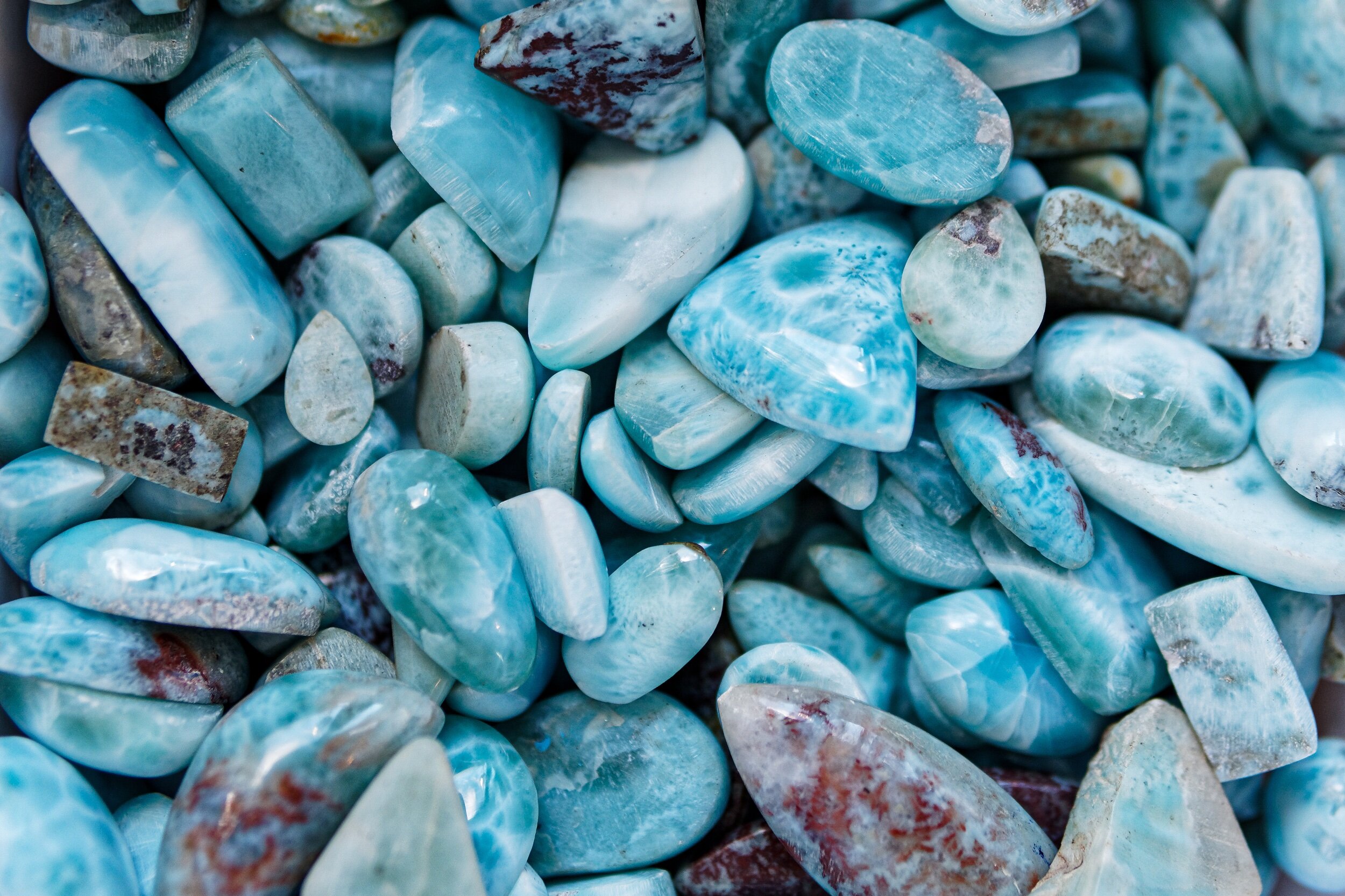
Lapis Lazuli
Few stones have a storied history as long as Lapis Lazuli pointing toward its value as a unique antiquity. The etymology of its name will take you on a journey through Latin -> Medieval Latin -> Arabic -> and Persian. It is no surprise that it’s strikingly intense blue color has found its way into art and jewelry for thousands of years across many cultures. Presently Lapis Lazuli can be found in Northeast Afghanistan, Lake Baikal Russia, and the Andes Mountains of Chile.

Larimar
Beautiful La República Dominicana, the only place where natural Larimar is formed and mined. In 1974 a Dominican resident Miguel Méndez and U.S. Peace Corps volunteer Norman Rilling learned that amidst the stunning waters at the base of Bahoruco Mountain Range a beautifully unique stone thought to have come from the sea could be found. Once found, Miguel took the name of his daughter, “Larissa” and the Spanish word for sea “mar” and penned the name “Larimar”.

Malachite
Revered for its deep concentrated green color, Malachite has found itself at the center of many gorgeous works of art, museums & royal homes. It’s crystal structure sets it apart in appearance from the transparent, iridescent minerals most commonly associated with gemstones. But when solid it can take on a polish that shows a beauty between its bands of green like no other mineral.

Moonstone
You never quite know exactly what your seeing when you look into the glow of a moonstone. This Feldspar mineral has captivated the hearts of many cultures with its unique adularescence. The Romans, Greeks, & French have all historically used this mineral in their art and jewelry. It’s optical presence has been poetically described as capturing the glimmer of the aurora borealis with a single turn of this exciting stone.
